Can diabetics eat satsumas if they are so sweet?
I am Blessed Dad, a clinical dietitian specializing in weight management, nutritional treatment of diseases, and maternal and infant nutrition, and I hope my answers are useful to you.
Let's start with the answer to this question: diabetics can eat satsumas, but only in moderation with their blood sugar. Explain again why.
Diabetics are very worried that their blood sugar will rise very high after eating something sweet, and this concern is normal, but there is a misconception here. That is that sweetness does not represent the number of carbohydrates. Fructose is 1.8 times sweeter than sucrose, so the same amount of fructose tastes sweeter than sucrose; starch has no sweetness at all, but it can also raise blood sugar. The content of carbohydrates in the sugar orange is about 10%, in the fruit or belong to the low-sugar fruit, but the carbohydrates of the sugar orange is mainly fructose, the sweetness is relatively high, coupled with the acid content of the sugar orange is relatively small, so eat up the taste is relatively sweet.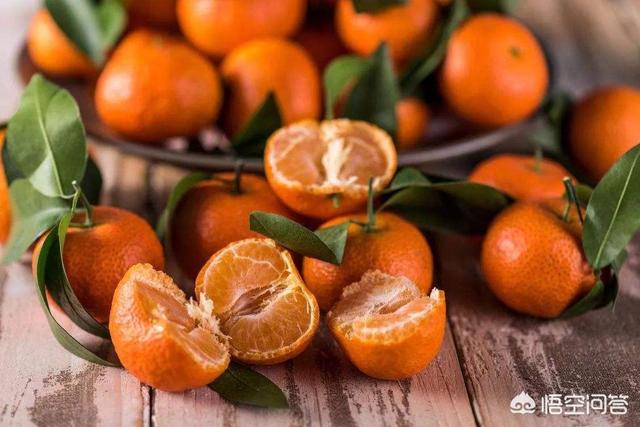
Whether or not a diabetic is a good candidate for salsify depends on three factors:
- Glycemic control status of diabetic patients
- The ability of satsumas to raise blood sugar can be measured by the glycemic index (GI)
- The total amount of carbohydrates contained in beach oranges can be measured in terms of dietary glycemic load (GL)
Glycemic index GI is a measure of the degree of food-induced elevation of blood glucose. Glucose has a glycemic index of 100, and a glycemic index greater than 70 is a high-glycemic food; a glycemic index between 55 and 70 is called a medium-glycemic food; and a glycemic index less than 55 is a low-glycemic food.
Glycemic load equals the product of the total amount of carbohydrates in a food and the glycemic index of that food divided by 100; a glycemic load of less than 10 is considered a low glycemic load, a moderate glycemic load between 10 and 20, and a high glycemic load greater than 20.
In returning to the title. If a diabetic patient's blood sugar control is not ideal and his blood sugar is very high, then this is not the time to eat sugary fruits, and, of course, you can't eat satsumas. If the diabetic patient's blood sugar control is very good, under seven millimoles per liter, it is possible to eat low-sugar fruits. Checking the information can be found that the glycemic index of satsuma orange is 43, which is a low glycemic index fruit. So diabetics with good blood sugar control can eat satsumas.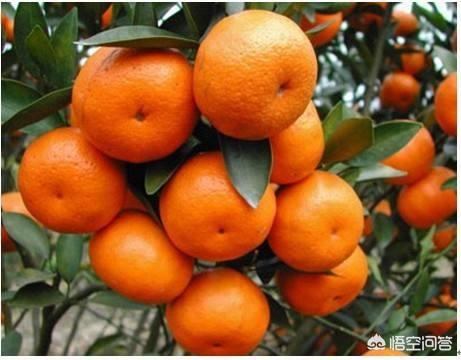
So how many satsumas can you eat per day? It is generally recommended that diabetic patients eat around 200 grams of fruit per day. Checking the information, we know that the carbohydrate content of tangerine is about 10%, that is, 200 grams of tangerine contains 20 grams of carbohydrates. Let's calculate the glycemic load of eating 200 grams of sugar oranges: 20 × 43 ÷ 100 = 8.6 That is to say, eating 200 grams of sugar oranges a day causes a glycemic load of 8.6 on the body, which is still a low glycemic load. So there is no problem for diabetic patients with good glycemic control to eat 200 grams of sugar oranges a day!
I'm FooDad, a clinical dietitian, if you find my answers useful, why not follow my headline for more nutrition and health information. Any questions about diabetes can also be discussed in the comments, happy to share my expertise 😄
Thanks for the invite.
It's that time of the year again when everyone is sitting around the heater eating oranges while watching TV. Satsuma oranges are one of the very favorite fruits, they are small in size and taste so sweet and cold that you can't help but eat a few of them.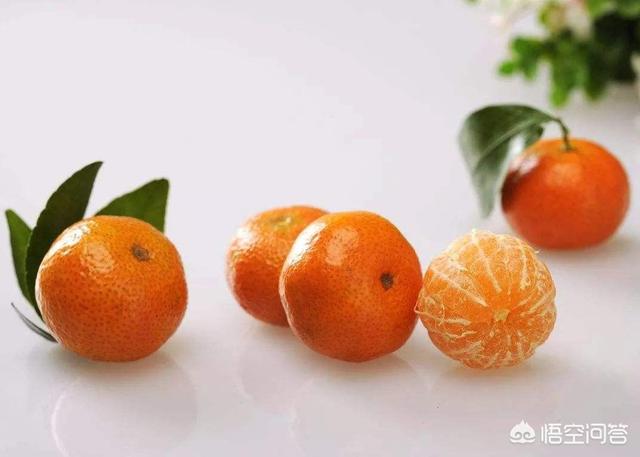
So can people with diabetes and high blood sugar eat such a delicious sweet salsify? Yes, you can!
Fruits with high fructose content
Although the sweet taste of tangerine, but most of the citrus fruits are mainly fructose, fructose sweetness is sucrose, glucose 40 to 50 times, fructose-rich fruits are very sweet taste, such as bananas, grapes, figs, peaches and so on. But the metabolic process of fructose and glucose are different, fructose does not have a greater impact on blood sugar, known as sugar "healthy sugar", coupled with the fruit is rich in dietary fiber, can slow down the rate of absorption of sugar, can assist in stabilizing blood sugar. Therefore, sugar lovers eat a little bit of sugar orange in moderation is actually no problem.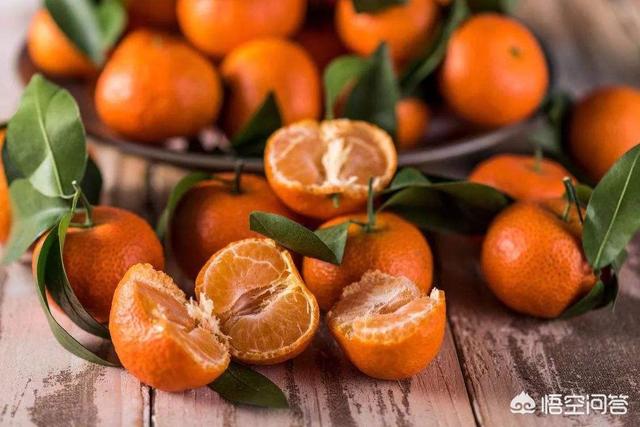
GI and GL of Satsuma
To determine the food suitable or unsuitable for sugar lovers, we usually look at the GI (glycemic index) value of the food, generally 55 to 70 belongs to the medium-high glycemic index of the fruit, not suitable for eating, shaThe GI of candied orange is around 40 to 57, which is actually a low to medium level, so it can be seen that candied orange is still a suitable fruit for sugar lovers to consume。
Another indicator is the GL (glycemic load), a little bit of image to explain is on behalf of the number of factors in the food to raise blood glucose, for example, watermelon in the water, factor density is less, the GL is lower, even if the glycemic index of watermelon is higher, but if you eat less as usual is also possible.The satsuma GL is 6 (higher than 10), which is medium, so how it seems, it's perfectly fine for sugar lovers to eat some satsumas。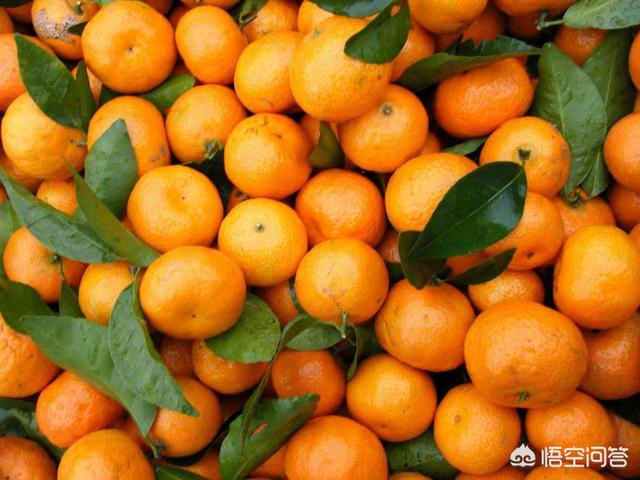
How to eat satsumas for sugar lovers
Suggested for Sugar LoversEating three or four satsumas (100g) at one time is about right, and don't overdo it!After all, satsumas also contain glucose and sucrose, and a high intake of total sugar is likewise detrimental to smoothing blood sugar.It's best to keep it to no more than 200g in a day, which is probably about seven or eight。It's best not to choose to eat it after a mealIf your blood sugar is on the rise after a meal, eating more fruits with higher sugar content can fuel your blood sugar. Choose to eat when your blood sugar is smoother and relatively low, such as between meals is a good choice. Don't stuff your mouth with it quickly, or eat it slowly.
With the incidence of diabetes on the rise, both healthy people and those who have been diagnosed with diabetes are very conscious of the prevention and control of diabetes. If we have been diagnosed with diabetes, our friends around us will certainly be the first to advise us to avoid eating fruits, their reasons are no more than that the fruits contain sugar is too sweet, such as sugar oranges, extremely detrimental to blood sugar control. In fact, these are not completely correct, leaving aside the number of said harm, this is pure hooliganism. In fact, fresh fruits are rich in fiber, vitamins, minerals and antioxidants - so many nutrients that it's safe to say that fruits are also an important part of a diabetes treatment plan.
Nonetheless, diabetics should be cautious, as certain fruit choices may have a greater impact on blood sugar levels than others. It is important to know which fruits affect us the most and how to pair which fruits to consume and to know the appropriate portion sizes. That's the wise decision we should make.
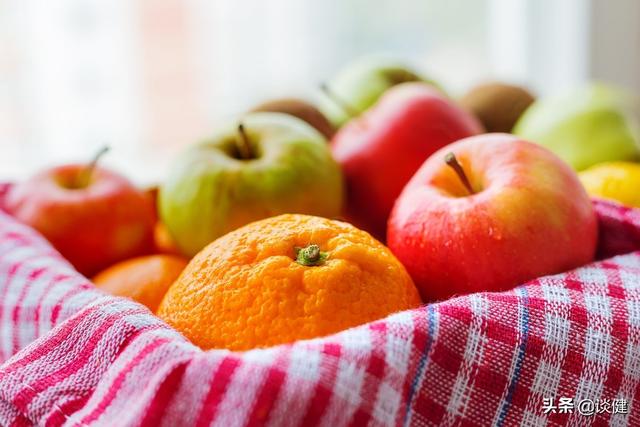
Sugar Oranges and Diabetes
Granulated oranges are known to have many health benefits such as vitamins, minerals, filler fiber and antioxidants. If consumed in moderation, granulated oranges may be beneficial to a diabetic diet plan. The key to consuming them is to ensure that they are consumed in the proper portion sizes. Additionally, the fiber in granulated oranges may help prevent blood sugar from rising and help increase satiety, thus reducing food intake.
On the other hand, sugar oranges are a carbohydrate and are rich in a natural sugar called fructose. Fructose is rapidly metabolized by the liver. During its breakdown, fructose is able to bypass rate-limiting enzymes and breaks down faster than glucose in the liver. Of course, if we consume large quantities of granulated fructose oranges at once, we can trigger a hyperglycemic crisis. But consumed in moderation, there is no problem. Several studies have shown that consumption of granulated oranges does not have a significant negative impact on blood sugar control.
On the other hand, it is important to put aside the traditional misconception that diabetes is caused by eating too many sugary foods, and that not all "sugar" affects blood sugar levels. What's more, we don't all eat sugar oranges in our lives, but often eat them in combination. So, in this respect, diabetes is able to eat tangerines. The note that is needed is that we have to be careful about the portions that we consume.
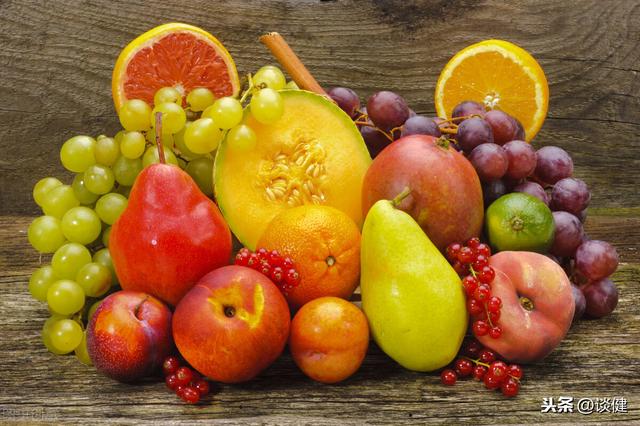
What other fruits can I eat with diabetes?
1. There are no "good" or "bad" fruits for diabetes, but if we want to get the most nutritional value, we should always look to fruits with high fiber content. A review of 83 separate studies concluded that a higher intake of fruits and vegetables reduces inflammation and improves immune cell distribution. In addition, another study found that a greater variety of fruits and vegetables, as well as a mix of fruits and vegetables, was effective in reducing the risk of type 2 diabetes.
2. Nonetheless, for diabetes, it is advisable to choose fruits with a lower glycemic index, and most fruits, except pineapple and watermelon, have a low to moderate glycemic index. If we notice an increase in blood sugar after eating any of these fruits, it is best to avoid them. It is also important to note that the glycemic index is different when consumed alone versus when mixed with other foods. For example if we are eating a high glycemic index fruit such as watermelon, pairing it with a low glycemic index food such as a low-fat food can help to balance out the effect on blood sugar levels.
3. In reality, most people with diabetes can choose low glycemic index fruits such as apples, pears, mangos, blueberries, strawberries, kiwis, granulated oranges, and so on. In addition, everyone has fruits that self-trigger their own blood sugar elevation, and these fruits will be more sensitive than others. Take the granulated orange, it contains a lot of vitamin C as well as vitamin A and potassium, which are very beneficial for our health. If we are more sensitive to sugar oranges and also our blood sugar rises after consuming them, then we should avoid them. If not, we can consume them normally. Secondly, if our diet restricts potassium or we take cholesterol-lowering medications, then we may need to watch our intake of citrus fruits, such as granulated oranges.

What fruits should I avoid for diabetes?
Avoid dried fruits and fruit juices: Dried fruit, especially if very sweet, has more carbohydrates per serving than natural whole fruit. It also contains more sugar because they are made with added sugar for flavor, and added sugar is extremely detrimental to blood sugar control. It is advisable to avoid all fruit juices, as almost 100% of them cause a sudden rise in blood sugar because the fiber-containing pulp of the fruit is discarded.
There are some fruits that we should be more cautious about. For example, it is recommended to consume only in specified limited quantities, such as bananas, cherries, grapes and pineapples, because their high carbohydrate content can lead to a rapid rise in blood sugar.

Conclusion:
In the case of diabetes, it is just a mistake to avoid limiting fruits in your diabetic diet altogether. After all, most fruits contain nutrients that are essential substances for our body and can be very helpful. However, when it comes to consuming fruits, we still have to make the best choices and always consider the carbohydrates in fruits, which are converted into sugar and can lead to an increase in blood sugar. Finally, no matter the type of fruit, it is wisest that we limit the number of servings.
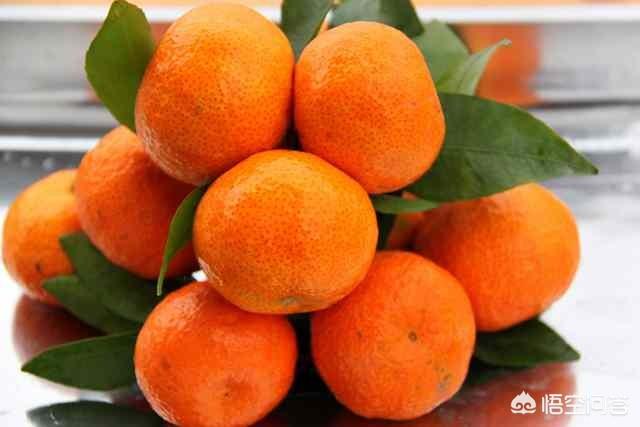
Satsumas are citrus fruits.
Whether or not a diabetic can eat fruit does not depend on whether or not it is sweet.It depends largely on the patient's blood sugar.
If the blood sugar is particularly high, of course, it is not recommended to eat, because the fruit itself contains sugar in it. High blood sugar and then eat, will cause blood sugar to rise further, increasing the burden of insulin.
However, under the condition of reasonable blood sugar control, eating satsuma oranges is a good choice. Because citrus fruits not only contain a lot of carotene, but also high in potassium. Especially satsumas are so small that diabetics can eat two or three at a time without problems.
Speaking of blood sugar, how much blood sugar is appropriate for a diabetic?
The simple recording method I generally recommend isSeven, eight, nine, ten.
即Don't go past seven on an empty stomach, but eight or nine after a meal.。
In this case, eat fruit between meals.
(Fasting blood glucose is defined as less than or equal to 7 mmol/L without any carbohydrate-containing intake for eight to ten hours.
Postprandial blood glucose is defined as blood glucose less than 10 mmol/L after two hours from the first bite)
You can have it in one day.200 gramsYou can eat about 20 small satsumas if you replace them all with satsumas.
Doesn't it look like a lot? At a stroke, it satisfies the visual cravings of diabetics.
Diabetics remember a principle~With relatively stable blood sugar control, you can eat anything! But don't overeat.
Even if you don't have diabetes, you shouldn't be insatiable in what you eat, as this can be counterproductive. Even if something is particularly good, eating too much of it won't be good for the body and will bring different disadvantages to the body.
They all think that satsumas are particularly sweet, so let's see how sweet they really are.
For diabetic diet, there is a very important index called glycemic index, the glycemic index of the sugar orange did not find, according to the sweeter canned orange to compare, we first set the sugar orange glycemic index of 57. From the data found on the network, it seems that the sugar content of the sugar orange is 10.5%, on average, 100 grams of sugar orange contains 10.5 grams of carbohydrates.
In addition to the glycemic index, there is another important figure called the food glycemic load, so when we eat 100 grams of satsumas, the food glycemic load GL = 10.5 x 57/100 ≈ 6, and the glycemic production load of 200 grams of satsumas is 11.97, which is about 12, and the GL is in the range of 10 - 20 for the general effect on blood glucose;
So 100 grams of satsumas is a low glycemic load food and 200 grams of satsumas is a medium glycemic load food. In this way, we can see that eating 1-2 satsuma oranges doesn't really have much of an effect on blood sugar, but if you eat not 1 but 1 pound, the GL is higher and the effect on blood sugar is more pronounced. In other words, it's not the type of food that matters, it's how much you eat.
In addition for diabetics to eat fruit there are several principles, first, to eat during the stabilization of blood sugar, second, to eat between meals, and third, to reduce the amount of staple food for the next meal, master these principles, calculate the GL value of food, control the intake of food, you can control blood sugar.
Thanks for the invitation. For people with diabetes, it's always "the smell of sugar". The prevalence of diabetes in our country is already as high as 11.6%, and the number of people with diabetes in our country accounts for about a quarter of the world's population, which is enough to make everyone take diabetes seriously.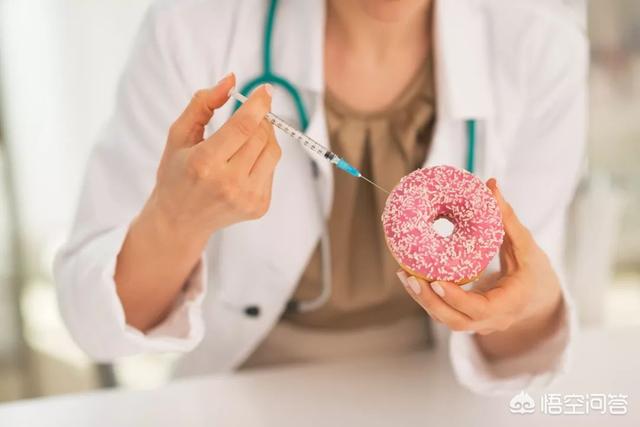
Can you get diabetes if you eat a lot of sugar?
There is a scientific misunderstanding in this statement. Insulin is a very important substance in the body to lower sugar; insulin is the "sugar-lowering hormone" in the body, and diabetes "occurs" due to insufficient insulin secretion or insulin resistance. "Diabetes occurs due to insufficient insulin secretion or insulin resistance. When there is a problem with insulin in the body, patients cannot effectively control their own blood glucose, and diabetes will be induced by a continuous rise in plasma glucose levels; family genetic factors, unhealthy lifestyles, and other risk factors have a close relationship with the prevalence of diabetes.
It is worth noting that for those whose pancreatic function is disrupted, their blood sugar may be elevated even if they don't eat sugar.
In other words, healthy people's pancreas is normal, its ability to secrete insulin is also normal, then even after eating sugar can be broken down normally, blood glucose will not be excessively soaring, people do not eat sugar because of diabetes.
Even for those who already have diabetes, it is important to note that sugar should not be strictly prohibited; comprehensively improve their own conditions by limiting high-calorie diets, strengthening exercise, and regular monitoring to reasonably prevent and control diabetes.
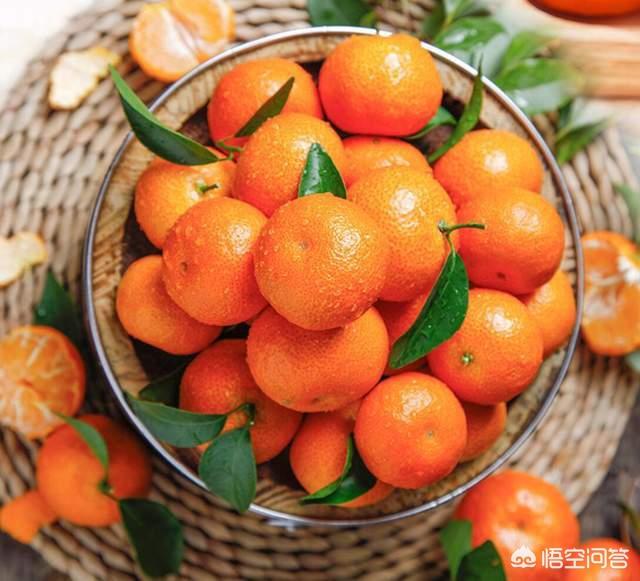
Fruits are perfectly fine for diabetics, as are granulated oranges:
Fruit is a nutrient-rich food, rich in vitamins, dietary fiber, plant pigments, and other nutrients, and both healthy and diabetic people will reap the benefits of eating it.
For diabetic patients, fruit can be eaten, but to choose scientifically, recommended that sugar lovers should try to choose "low GI fruit". Watermelon, plum, melon and other fruits as the representative of the fruit sugar content is very low, its sugar content are below 5%, recommend sugar lovers to choose more such fruits; sugar orange, grapefruit, grapes, lemons, oranges, pears, pineapples, loquats, apples and other common fruits as an example of the sugar content of fruits is "medium", its sugar content of 6% -15%, sugar lovers can eat less; bananas, pomegranates, pomegranates, sugar lovers can eat less; bananas, pomegranates, pandas, pandas and so on. -15%, sugar friends can eat less; bananas, pomegranates, jujubes belong to the "high sugar fruit", its sugar content are more than 16%, need to be strictly limited sugar friends, especially after the processing of jujubes, raisins, persimmons, as well as dried fruits and other foods, it is best not to eat.
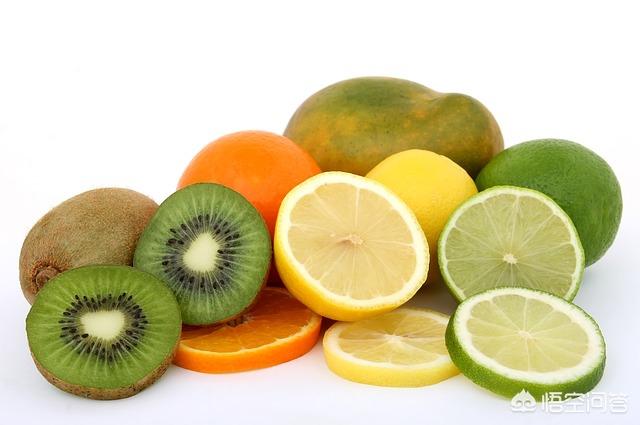
Sugar lovers need to be careful as they eat fruits:
- Taste the fruit in moderation with more optimal blood sugar control:
When the fasting blood glucose control in the sugar friends below 7.8mmol / L, two hours after the meal blood glucose control in the 10mmol / L below, glycated hemoglobin control in the 7.5% below, and life does not often occur in the case of hypoglycemia or hyperglycemia, the fruit that can be eaten without fear, of course the premise is a limited number of, timely and reliable choice.
- Clarify the time to eat fruits and not to eat them indiscriminately:
Time is a factor that needs to be strictly controlled in the process of eating fruits. It is recommended that sugar addicts consume fruits between meals, 10:00 a.m. or 3:00 p.m. is a good time to eat fruits.
Sugar lovers need to pay attention to the fact that too many carbohydrates in a single intake will increase the burden on the pancreas, it is not recommended that you consume fruits before or immediately after meals.
- Limit + split and consume fruit reliably:
Undoubtedly, the amount of fruit eaten by sugar users should be less than that of healthy people; taking into consideration, it is recommended that sugar users consume no more than 200 grams of fruit in a single day, and reduce the intake of staple food while eating fruit. In addition, fruit consumption, more conducive to the stabilization of blood glucose, recommended that sugar patients can be divided into 2-3 times to eat the fruit of the day, for example, 100 grams in the morning, 100 grams in the afternoon, to relieve cravings at the same time, but also to avoid excessive fluctuations in blood glucose.
Through this article, you will find out that diabetics can eat fruits. Whether it's sugar oranges or apples, eating fruits should be careful about the time and the amount of food consumed, in addition to the need for proper selection. Consume fruits dependably to avoid excessive fluctuations in blood sugar, fruits are very nutritious and should be consumed by sugar lovers. Safe + reliable, sugar lovers will reliably embrace health.

Note: Wang Silu original; pictures from the network, if any infringement, please inform the deletion.
Sugar orange, thin and crispy skin, juicy flesh, sweet taste like sugar, is a fruit that people often eat in the fall and winter seasons. There are many diabetics will avoid eating fruit, think the fruit taste sweet, eat will raise blood sugar, even if you want to eat are afraid to eat. So diabetics can eat sugar orange?
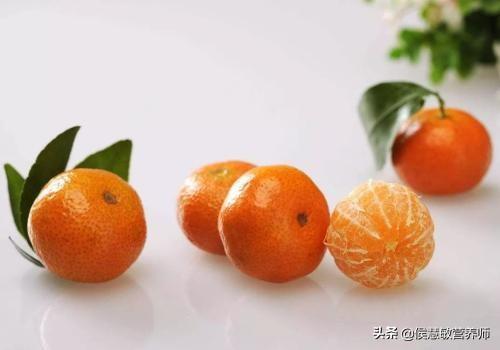
Whether diabetics can eat granulated sugar oranges depends on the situation. Sugar oranges are still relatively high in sugar content in the orange family, usually the average sugar content of oranges is around 10.2%, but sugar oranges contain grams of sugar up to 13.7%.
If a diabetic's blood sugar control is relatively stable, then it is appropriate to eat a little sugar orange. Sugar oranges are rich in vitamins, minerals, dietary fiber and phytochemicals. Dietary fiber can slow down the digestion of food, but also slow down the release of sugar, and contains the same amount of carbon compounds of the fine staple food, the fruit on the blood sugar of the speed of the relatively smaller, but also more nutritious.
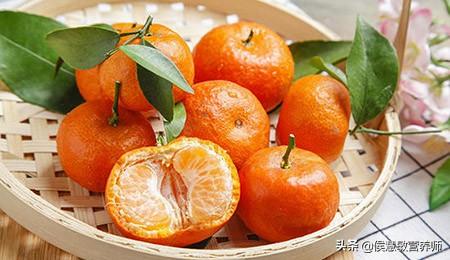
There are just a few things to keep in mind when eating it:
1, eat the amount to grasp. After all, the sugar content of sugar oranges is not low, eat more than the same on the control of blood sugar is unfavorable. Diabetics in the eating sugar orange, the best day not more than 3, do not eat all at once, eat separately, so that the impact on blood sugar can be minimized.
2, the time to eat should also pay attention to. Eat sugar orange when you choose to eat in the middle of two meals, this time the diabetic's blood glucose value is relatively low, the impact on blood glucose is relatively small, and eat in the middle of two meals, but also to prevent the emergence of preprandial hypoglycemia, but also to supplement a certain amount of nutrients.
3, each person's degree of digestion and absorption of food is not the same, when you first eat a small amount to eat, and eat to monitor the changes in blood sugar, according to the blood sugar reaction to decide to adjust the consumption.
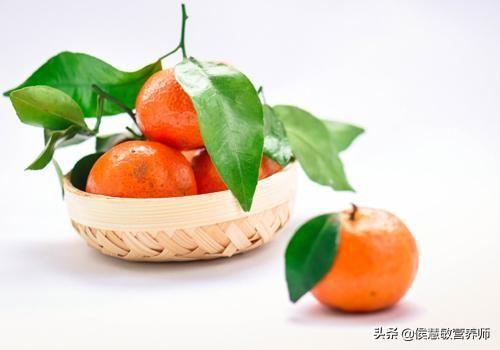
If the diabetic's blood sugar control is not too good, then do not eat sugar oranges for the time being, and wait for the blood sugar to stabilize before considering. Therefore, whether diabetics can eat sugar oranges should also vary from person to person, not one size fits all, according to the different circumstances of each patient to consider.
Dietitian Sugar is here to answer your questions. Sugar oranges taste so sweet, so what is its sugar content?
The sugar content of Satsuma mandarin is around 10%, which is not a high value to put in fruits, and even a little lower than apples and pears that we often eat. The glycemic index of tangerine is 44, which is also not high. Diabetic patients in blood glucose control is okay, can eat a little sugar orange. Satsuma oranges are rich in vitamin C,Fiber, Lutein,caroteneIt also contains calcium, phosphorus, magnesium and other essential elements. In particular, it is rich in lutein, which helps diabetics to protect their eyes and prevent fundopathy. Vitamin P in tangerine can protect blood vessels and prevent microvascular lesions.
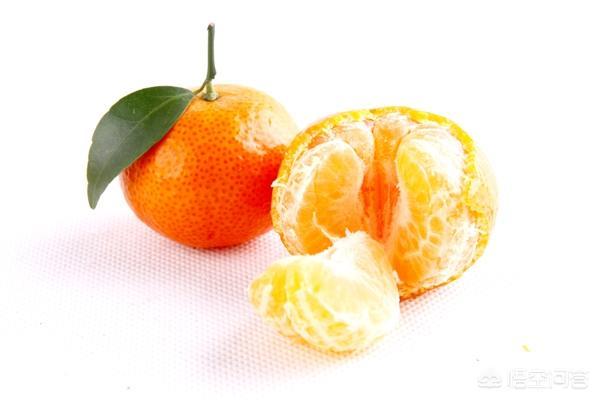
So how many satsumas can a diabetic eat?We know that satsumas are relatively small, to be on the safe side, do not consume more than three at a time, and it is best to eat them one by one, that is, every one or two hours to eat one, do not eat three or four in one breath. The total daily consumption of tangerines is recommended to be no more than six (the specific amount depends on the size of the tangerines, the larger is five or six a day at most, the smaller is seven or eight a day at most), the total amount is about 200 grams.
In addition to satsuma tangerine, citrus fruits such as oranges, tangerines, rutabagas, emperor citrus, etc., diabetics can also be eaten in moderation, the principle is that, when the blood glucose control is good, eat, not eat when the control is not good. Daily consumption is controlled within 200 grams, placed in the meal to eat. It is best to divide the fruit into small portions and eat them in separate meals, which will help stabilize blood sugar.
I hope Sugar's answer can help sugar lovers, more diabetes diet problems, you can leave a message to consult.
Hello! Nourish thought that you can eat it.
Many diabetics have a misunderstanding about sweets, that is, high sugar content can not eat. Nutrition Jun thought otherwise, high sugar content of food, such as sugar orange, sugar content of 10.55% (data from the network), not can not eat, just can not eat more.
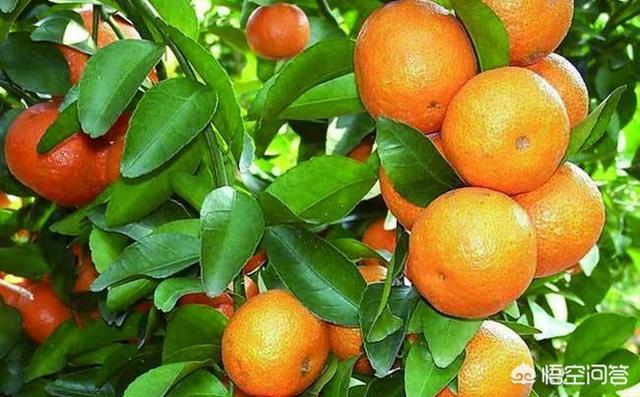
We only emphasize the need for a controlled diet for diabetics because we want to keep the blood sugar uptick fluctuating within a reasonable range. This is the same old saying of diabetic dietary principles: diabetics can eat anything, but nothing can be eaten more. Therefore, the Nutritionist suggests that before eating satsumas, you need to pay attention to the following 3 issues:
1. Whether the blood sugar has been stable recently
As mentioned earlier, the reason for a controlled diet is to control your blood sugar smoothly. If your blood sugar is unstable, you definitely can't eat indiscriminately. If your blood sugar is stable, then there is certainly nothing wrong with eating a little bit of fruit with high sugar content. How much is considered stable?
Blood glucose values fluctuate within the normal range: for diabetics, fasting: around 7 mmol/L and after meals: around 8 mmol/L is sufficient. If it can be controlled within the normal human blood glucose range, that's even better.
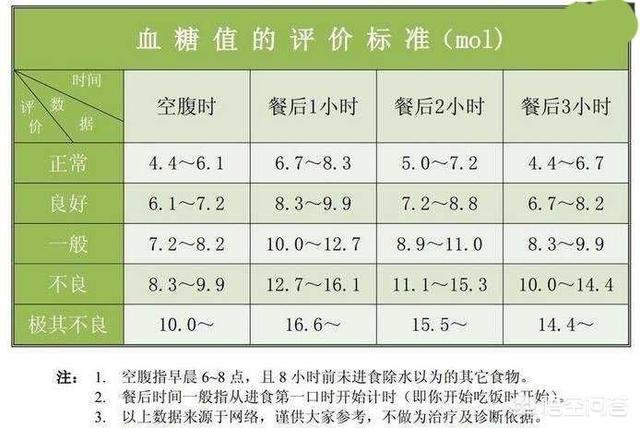
2. Choose to eat between meals
By choosing to eat fruit between meals, you can minimize the effect of fruit on your blood sugar. Somewhat similar to eating smaller meals, if you eat too much satsuma, you can reduce the amount of your main meal accordingly at the next meal.
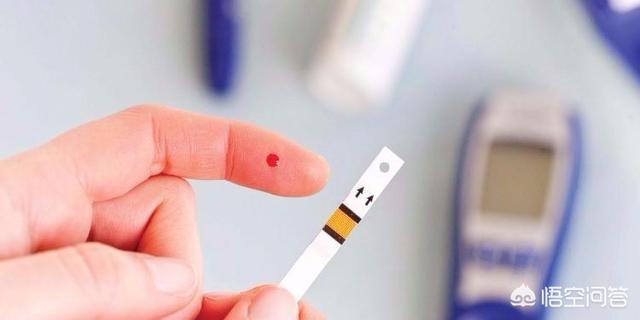
3. You can move after eating
If you are really worried about the effect of satsumas on blood sugar, then after eating satsumas, you can choose to exercise to lower sugar. Go out for a walk, take the blood sugar that you ate up and burn it off with exercise.
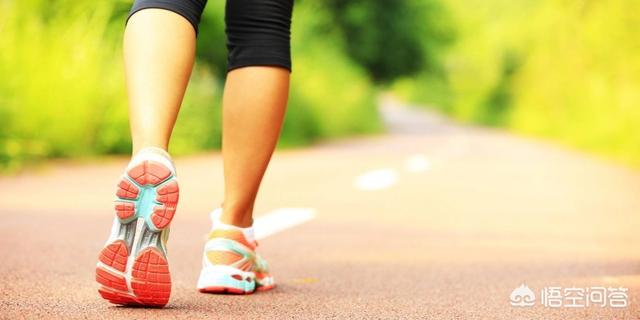
By doing these 3 things, Nutritionist believes that diabetics will be able to enjoy salsify happily.
I hope the above suggestions can help you, get more information about diabetes, please pay attention to the health care fine-tuning!
Diabetes occurs due to a lack of insulin, which is the only hormone in the body that lowers blood sugar. Normally, people stimulate insulin secretion during meals to help lower blood sugar after meals. As you can imagine, in the case of diabetes, insulin deficiency leads to uncontrolled blood sugar.
Can diabetics eat satsumas if they are so sweet?
Because of this, diet is a crucial aspect for diabetics. Eating the same food as a healthy person can lead to uncontrolled blood sugar for a diabetic. Therefore, diabetics have always been asked to stay away from high-sugar foods, such as cakes, cookies, breads and carbonated drinks, which are contraindicated for diabetics. It is only that high sugar foods are measured in terms of their sugar content and not the sweetness of the food. This is because sweetness is just a perception given to people, and some foods that taste sweet are not necessarily high in sugar, while some unsweetened foods are dangerous on the contrary.

Can diabetics eat satsumas?
Diabetic patients have been asked to eat low-sugar fruits, but few patients may be clear about which fruits are low-sugar. Sweetness is definitely not a measure of the sugar content of fruits, like hawthorn tastes sour, but it contains high sugar content, almost equal to jujube, while watermelon is very sweet, but the sugar content is much lower than apples. Shatsugange tastes very sweet, may we all take it and ordinary orange compared to see, in fact, Shatsugange sugar content in all fruits, not the highest, about every 100ml contains 10.55g of total sugar, almost the same as apples, but much lower than red dates (23.2%). The reason why shatsugat tastes so sweet is mainly because it contains less peracid, about 0.35g/100ml.
So, diabetic patients can eat tangerine, but tangerine is relatively high sugar content of a fruit, for the recent blood sugar control is not good for patients, it is best not to eat. Even if the blood sugar is stable patients, can not eat, must grasp the amount of food, but also need to pay attention to eat tangerine should be corresponding to reduce the consumption of other fruits.
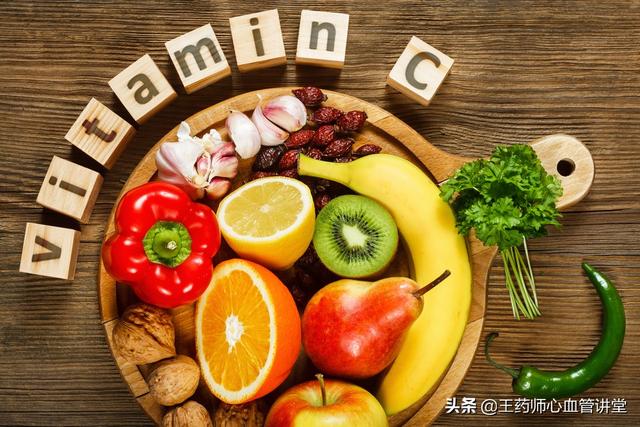
There are some unsweetened foods that diabetics should beware of!
Like sugar oranges, dates, cakes and other sweets, diabetic patients will deliberately stay away from, in fact, these foods are not dangerous, and really let the patient negligent vigilance is not sweet high-sugar foods, these foods do not eat sweet, or even sour, salty, but in fact is also the culprits of elevated blood glucose, is hidden in the patient's side of the "time bomb! "The food is not sweet, or even sour or salty.
The most common high-starch foods, such as the staple foods we eat every day, steamed buns, rice, etc., as well as taro, potatoes, black rice, glutinous rice, yam, lotus root powder, etc., which are not sweet to eat, but are rich in starch, and starch is actually carbohydrates, which are broken down into glucose in the body, elevating blood glucose, and the patient should pay attention to controlling the intake of these foods.
There are also foods such as yogurt, hawthorn slices, dried apricots, plums, soda crackers, salad dressings, braised pork, shredded pork with fish, sweet and sour pork, etc. These common foods taste either sour or salty, and none of them are sweet, but all of them actually contain high levels of sugar as well. These are the foods that diabetics need to beware of and try not to eat.
I am Pharmacist Wang, dedicated to helping you manage your body by explaining complex and difficult disease knowledge in plain words. Your praise is my greatest motivation! Also, if you have family members with diabetes diet-related problems, please pass this article on to them!
This question and answer are from the site users, does not represent the position of the site, such as infringement, please contact the administrator to delete.